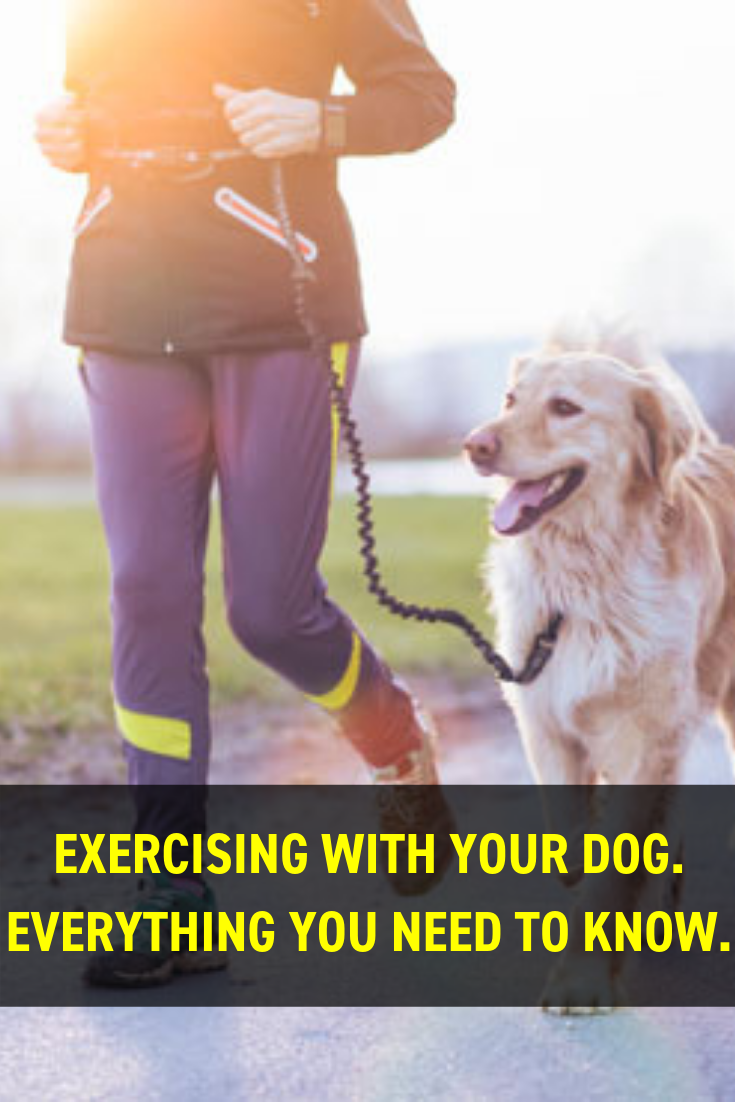Many pet owners adopt a dog in the hopes of having a companion to join them on their adventures. Dogs can be a great encouragement to help you get out of the house, exercise more, and improve your overall health and quality of life.
However, just like any athlete, your dog needs appropriate training and preparation before he can become your fellow fitness junky. Before you strap on your favorite running shoes, make sure your dog is up to the challenge!
Is Your Dog Suited to Your Exercise Routine?
It should come as no surprise that each breed of dog has its own individual strengths and weaknesses. Not every dog will be capable of safely participating in every type of workout.
Brachycephalic breeds - those with shortened noses such as pugs, boxers, and bulldogs - are poorly suited to rigorous activity due to conformational abnormalities such as narrowed nostrils and elongated soft palates. These common breed characteristics make it difficult for these dogs to breathe normally, predisposing them to respiratory problems and heat stroke.
Similarly, large and giant breed dogs may be predisposed to joint disease, which may be accelerated by high-impact activities such as sustained running and jumping. Before starting any new exercise routine, it is important that you visit your veterinarian to have your dog fully examined to ensure he is healthy enough for the activities you have planned. Your veterinarian can also advise you on any limitations your dog may have and how to avoid injuries.
Young puppies should not participate in any rigorous exercise before their growth plates close, which for most breeds occurs around one year of age. It is generally recommended that young and growing dogs not be forced to exercise. In this case, forced exercise is defined as any activity beyond what the puppy would normally engage in with other dogs of the same age. If your dog is still a puppy, you’ll need to wait a while before he can safely act as your workout buddy.

Building Endurance
You would not expect a previously sedentary human to complete a 5K as their very first run, so don’t push your dog to do it either! While dogs can be fast runners, they are built for short bursts of energy rather than sustained activity. In order to prevent injuries, you will have to build your dog’s endurance gradually over several weeks or months.
If your dog has previously been a couch potato, start by taking him on longer walks and increasing the distance you walk each week. As your dog adjusts to the increased activity, you can start to add in short bursts of light jogging. Using the Fi smart collar will allow you to set daily, weekly, and monthly activity goals for your dog so you can customize his training plan and track his progress. Remember to always stop activity before your dog gets too tired, and monitor your dog for any signs of discomfort.

Staying Safe
Your dog’s health and safety should be your number one priority during any workout. Factors to consider include:
Weather
Dogs are much less tolerant of changes in weather than we are. Hot weather is particularly dangerous for many dogs. Dogs cannot sweat and cool themselves the same way humans do, and therefore they are at high risk of heat stroke in warm weather, particularly if they are exercising.
During periods of warm weather, limit exercise to the morning and evening to avoid the hottest part of the day. Take frequent breaks in the shade and always be sure to offer your dog clean, fresh water. Many dogs will push themselves well beyond their limits in order to keep pace with their owners, so never assume that your dog will stop when he gets tired.
It is your responsibility to monitor his activity and restrict him if necessary. If you are ever in doubt about your dog’s ability to exercise, it is best to leave him at home.
Terrain
Dog’s paws are sensitive and may be injured by hot pavement or rocky trails. If challenging terrain is part of your workout routine, consider investing in a high quality pair of dog boots to protect your dog’s paws. While they may look funny at first, many dogs adjust to them quickly. Stay vigilant throughout your workout and watch for potential dangers to your pup, such as traffic, off-leash dogs, and other obstacles. Slowing down and allowing your dog to set the pace will help him navigate the terrain safely.
Injury Prevention
Like any athlete, your dog should have thorough warm up and cool down sessions before and after each workout. This is also a perfect time to evaluate your dog and detect any potential problems. Is he comfortable and happy? Do you notice any pain or stiffness? Does he seem energetic and eager to participate in your activity?
If you notice anything out of the ordinary for your dog, it is best to leave him at home. If your dog shows any sign of injury, such as pain, lameness, stiffness, lethargy, or avoidance of a particular activity, he should be evaluated by your veterinarian before proceeding with your workout routine.
Water
No matter what your workout entails, always carry fresh water and a bowl with you. Take frequent breaks and offer your dog water at every stop. Do not force your dog to rely on natural water sources such as rivers or ponds. Many dogs will decline to drink from these sources even if they are thirsty.
Never allow your dog to drink stagnant water from puddles, because there is a significant risk of contracting parasites or infectious diseases from these untreated water sources. It is your responsibility to ensure that your dog has access to clean, fresh water at all times.

Summary
Dogs make great exercise companions, but appropriate preparation is necessary to ensure your dog stays healthy and safe. Always consult your veterinarian prior to starting a new exercise routine, and seek veterinary care immediately if your dog ever shows signs of injury. As always, be sure to keep your Fi smart collar charged and ready, so you can track your dog’s adventure


